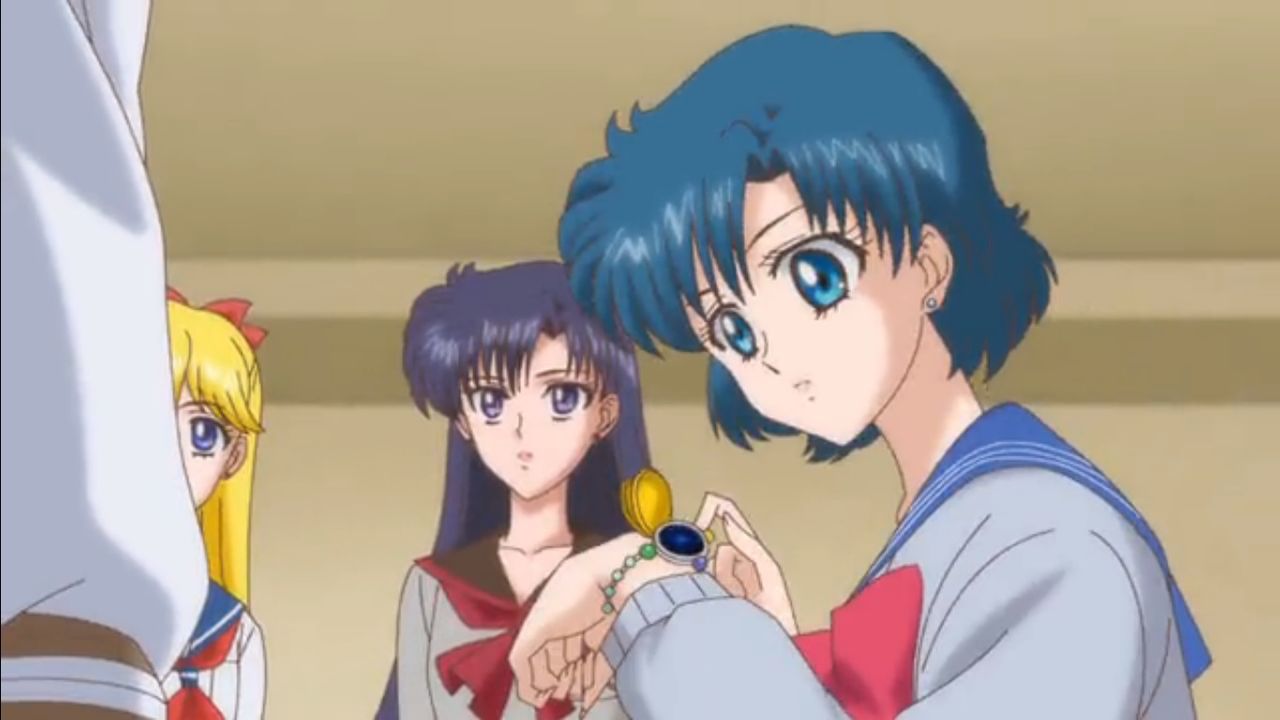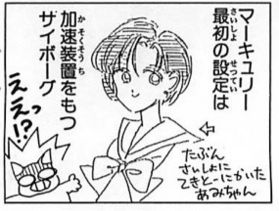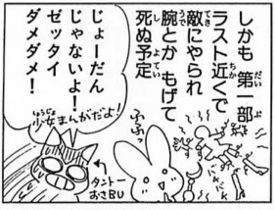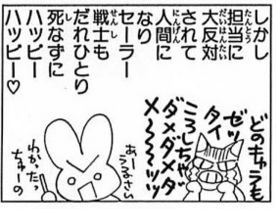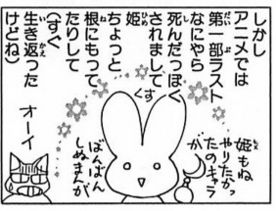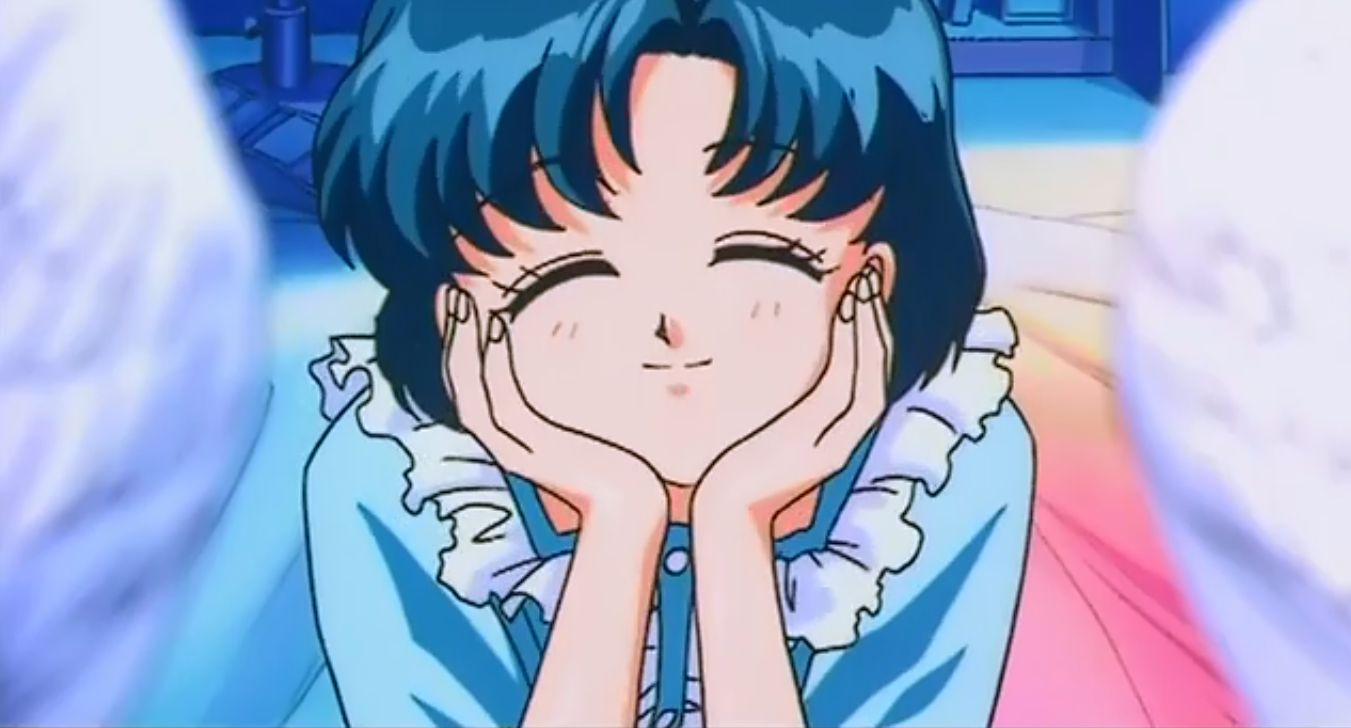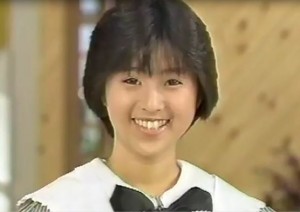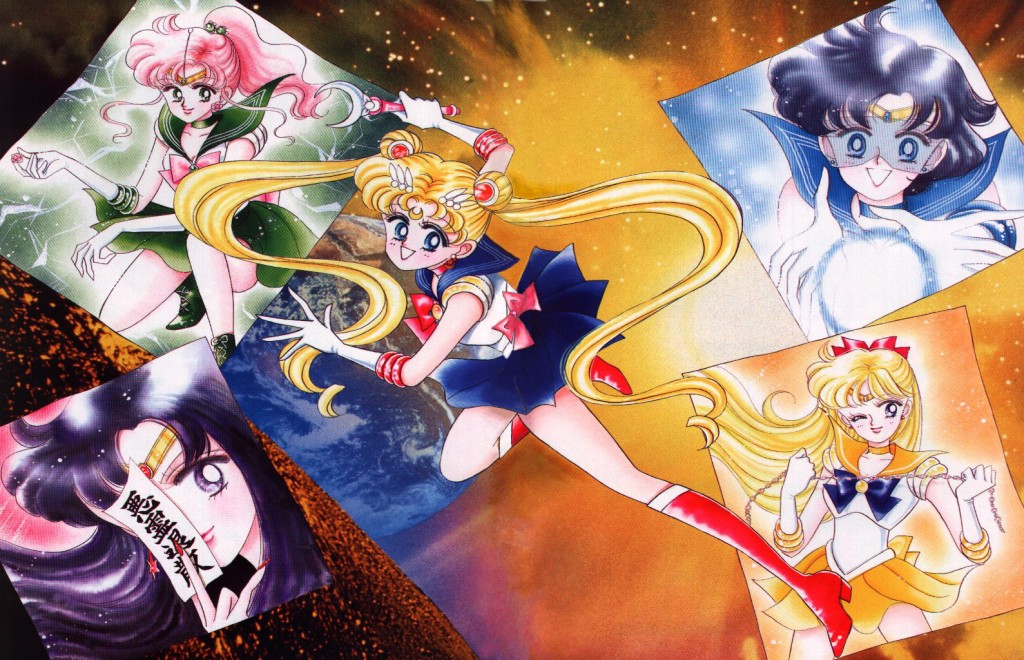To be fair, a more appropriate first question would probably be “was Sailor Mercury supposed to be a cyborg?” but that can be solved with a simple yes or no answer, so it’s better to not make things so simple. However, that is a very good (and astute!) question, and the one which we’ll answer first. So what is this talk about Ami being a cyborg, anyway?
Well, as Ms. Takeuchi outlines in her liner notes,1 Ami (or Sailor Mercury, since the character of Ami Mizuno probably wasn’t fully developed at that time) was originally meant to be a cyborg.
The original design for Mercury was that she would be a cyborg with acceleration technology. (This is probably the original Ami that I randomly sketched out)
Making matters worse, Ms. Takeuchi’s original intention was for this Cyborg Mercury to be destroyed at the end of the Dark Kingdom arc and have her die off (though this idea was ultimately taken up in the shocking end of the first arc in the anime).
Princess Naoko: “What’s more, near the end of the first arc, I had planned to have her arms and other parts torn away and have her die.”
Editor Osabu: “This isn’t some joke here, NO WAY! This is a girl’s comic!”
Fortunately for us, and for the rest of the Sailor Moon lore, her editor Fumio “Osabu” Osano objected strenuously against this idea for, well… multiple reasons. Of course, the series was intended to be a shojo manga for girls and obviously you’d want to avoid really dark scenes like the death of a character. Robots also (at least at that time) seemed oddly out of place. One of the biggest reasons, though, seems to be that Mr. Osano seems to have taken quite a liking for Mercury from the beginning and is a self-professed Mercury fan even now.2 In fact, Ami’s character design is even based on the source for his Osa-P/Osa-Bu nickname.
Princess Naoko: “However, my manager rejected that idea vehemently and it ended happy-happily without any of the Sailor Soldiers dying.”
Editor Osabu: “You absolutely, totally, CANNOT kill anyone!”
So while all of the characters were spared in the manga, it turns out things took a turn for the worse and, in a strange turn of fate, the anime producers decided to kill off all of the Sailor Soldiers in the anime (an oddly dark turn for the worse for a series meant for such little kids and their families). The irony wasn’t lost on Ms. Takeuchi, however.
Princess Naoko: “However, in the final part of the first arc in the anime, wouldn’t you know it, but they all died! I still hold a grudge over that (but they all came back!)” (I also wanted to make a manga where the characters all die off!)
Editor Osabu: HEY!
It’s definitely interesting to see what a dark turn the manga was originally supposed to have taken and, had her editor not interfered, how different the Sailor Moon series could have turned out to be. Though Ami was ultimately spared from being a cyborg, she did keep some of the original ideas for Ami in tact, such as her being cool and logical, her high IQ, and her affinity for computers. To be honest, I definitely prefer it this way – I can’t imagine the story being remotely the same with robots running around! – but do kinda wish she would’ve elaborated more on what her ideas were!
